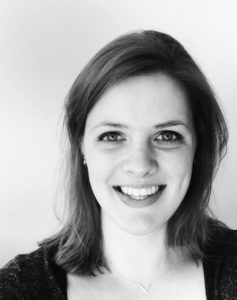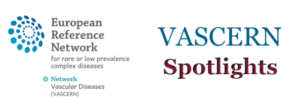VASCERN Spotlights: Natascha Assies

Welcome to a new monthly article segment entitled VASCERN Spotlights! Each month we will introduce one of the passionate and hard-working members of our network through a series of questions and answers. Our first VASCERN spotlight features the lovely Natascha Assies, from the Netherlands, who is the VASCERN European Patient Advocacy Group (ePAG) Co-Chair for the Pediatric and Primary Lymphoedema-working group (PPL-WG). Find out how she became involved with VASCERN and what her hopes are for VASCERN and the ERNs in general.
1) How did you become involved in the VASCERN project?
The Pediatric and Primary Lymphoedema-working group (PPL-WG) were looking for a patient representative or a patient ePAG co-chair for their group. In the Netherlands I was already involved in the patient organization (NLNet), so when Professor Robert Damstra, Chair of the PPL-WG, asked if there was a patient willing to become involved with VASCERN I accepted.
2) How do you as an ePAG representative participate in the activities of VASCERN?
I am an ePAG co-chair for the PPL-WG, so that’s what I’m currently involved in. I’m working on the pills of knowledge (short single video lessons of approximately 3-5 minutes long) for PPL, starting with proposals of topics for patients. I attend the monthly virtual conference calls of both the VASCERN ePAG patient group and the PPL-WG. Right now I’m also trying to get in touch with patient organizations for PPL in other European countries in order to expand our network.
3) Can you tell us a little about your rare disease and/or the patient association that you represent?
I have primary lymphoedema in both legs. This means that I have too few working lymphatic vessels, which leads to inadequate lymphatic drainage. I therefore have to wear compression stockings, otherwise the amount of lymphatic fluid in my legs and feet will keep increasing and lead to swelling (oedema). If not properly treated, there can be an increased risk of infections, which will worsen the lymphoedema. The patient organization that I represent, NLNet, helps patients to get in touch with others and gives them information about the disease on any subject they may ask for. They also have ‘support groups’ for patients in different regions in the Netherlands and have two national conferences every year.
4) What is one thing that you would like the general public to know about the reality of living with a rare disease?
I would like others to know that rare diseases are not always visible on the outside. Not everyone can see what you’re dealing with or that you’re struggling, and that you’re not always able to perform all of the activities that you want to do. Some days are just better than others.
5) What has been the most memorable moment as an ePAG representative so far?
The most memorable moment as an ePAG representative for me was the EURORDIS Membership Meeting in Budapest. I had only been involved with VASCERN for a few months and everything was still very new; it was still a little unclear what everything was and who was involved with what. Meeting so many motivated people, who were so willing to make the best of this opportunity and help others in any way they can, was the most memorable moment for me.
6) As a patient representative, what is your hope for VASCERN and for the ERNs in general?
I hope that VASCERN, and the other ERNs, will keep growing and that they will have an increasing influence on healthcare in Europe. The fact that ERNs help professionals to get in touch with each other and exchange knowledge and experiences is, in my opinion, a very helpful way to better understand rare diseases. The participation of patients in the ERNs is a new opportunity for us to give our insights on improving healthcare for patients with rare diseases, and I hope we (everyone in ERNs) will be able to continue to work towards this goal!
To learn more about the PPL WG, including its members and the diseases it covers, click here.
To find the list of VASCERN’s patient representatives, click here.




